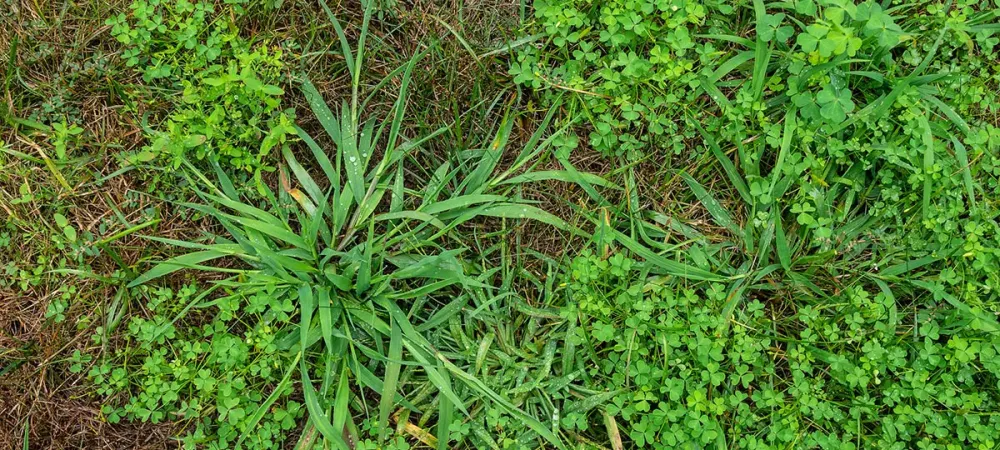What to Know About Crabgrass

Crabgrass is a common weed that can take over your lawn and ruin its appearance. This pesky plant is a type of annual grass that thrives in warm weather and can quickly spread throughout your yard. In this blog, we'll discuss what crabgrass is, how to identify it, why it's hard to get rid of, and how to eliminate it from your lawn.
What Is Crabgrass?
Crabgrass (scientific name: Digitaria spp.) is an annual grass that originated from warm regions in Africa. It was first introduced to the United States in the 1800s and has since spread throughout the country. Crabgrass is a low-growing weed that can quickly spread and take over your lawn if not controlled.
How to Identify Crabgrass
Crabgrass is a low-growing grass that has long, slender leaves that are light green in color. Its leaves grow in a rosette pattern, forming a circular shape that can be easily identified. Crabgrass also produces seed heads that are tall and spiky and can grow up to a foot high.
Why is Crabgrass So Hard to Get Rid Of?
Crabgrass is challenging to eliminate because it produces thousands of seeds that can remain dormant in the soil for years. These seeds can quickly germinate in early spring when soil temperatures are 50°F–55°F or greater, and the weed can spread rapidly, making it difficult to control.
Preventing Crabgrass in Your Lawn
Preventing crabgrass from invading your lawn is essential to maintain its beauty and health. Here are some ways to prevent the weed from growing in your lawn:
-
Mow at the right height: Mowing your lawn at the proper height can help prevent crabgrass from growing. The ideal height for most grass types is about 3 inches, as it allows the grass to shade the soil and prevent the weed from growing. Mowing too low can weaken the grass and allow crabgrass to take over.
-
Water deeply but infrequently: Watering your lawn deeply but infrequently can help prevent crabgrass from growing. Frequent shallow watering can encourage the weed to grow and spread, while deep watering promotes healthy grass growth.
-
Fertilize properly: Fertilizing your lawn with the right nutrients at the right time can help prevent crabgrass from growing. Applying a pre-emergent herbicide along with fertilizer in the spring can prevent the weed from germinating and growing.
-
Aerate your lawn: Aerating your lawn can help prevent crabgrass from growing by reducing soil compaction and promoting healthy grass growth. This allows the grass to grow deeper roots and shade the soil, preventing the weed from growing.
-
Use a weed barrier: A weed barrier can be placed over the soil before planting grass seeds or laying sod to prevent crabgrass seeds from germinating. This is a simple and effective way to prevent weeds from invading your lawn.
How to Get Rid of Crabgrass
If you already have crabgrass growing in your yard, there are several methods to get rid of crabgrass, including cultural, chemical, and mechanical methods. Here are some ways to eliminate crabgrass from your lawn:
-
Cultural methods: One way to control crabgrass is to maintain a healthy lawn. A thick, healthy lawn will outcompete the weed and prevent it from growing. You can achieve this by mowing your lawn regularly, watering it deeply but infrequently, and fertilizing it appropriately.
-
Chemical methods: You can also use herbicides to control crabgrass. Pre-emergent herbicides are applied before the weed germinates and prevent its growth—ideally in late winter or early spring before soil temperatures remain above 50°F for 24 consecutive hours. Post-emergent herbicides, on the other hand, are applied after the weed has grown and are used to kill the plant—we generally encourage a follow-up application made 60 days after the initial treatment. It's essential to follow the instructions on the label carefully and use these products with caution, as they can harm other plants and the environment.
-
Mechanical methods: Another way to control crabgrass is to manually pull it out. This method is best used for small infestations, as the weed can easily grow back if its roots are not completely removed. You can also use a hoe to cut the weed just below the soil surface.
In conclusion, crabgrass is a pesky weed that can quickly take over your lawn if not controlled. It is essential to identify and eliminate the weed to prevent it from spreading. By using a combination of cultural, chemical, and mechanical methods, you can effectively control crabgrass and maintain a healthy, beautiful lawn.
Call The Professionals
It can be extremely difficult to get rid of crabgrass for good without the help of a lawn care professional. Contact our team today to learn how you can get a weed-free lawn!
